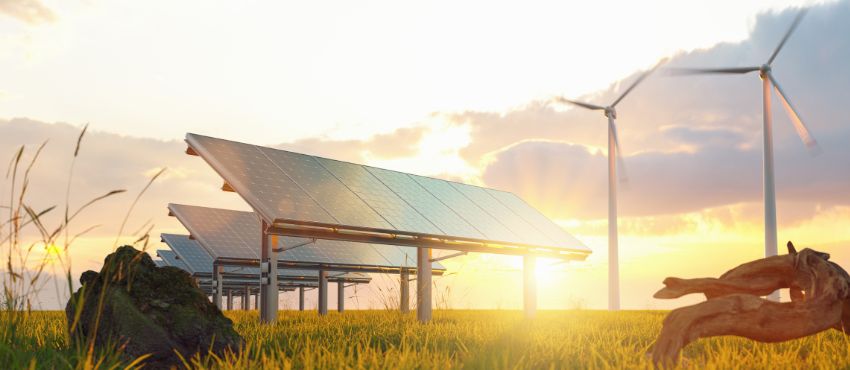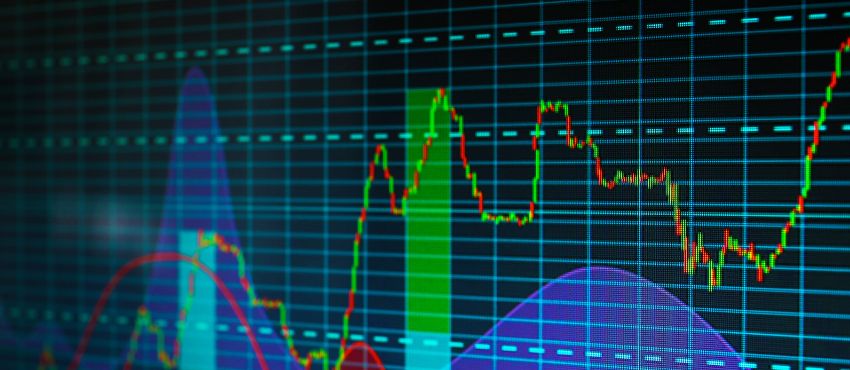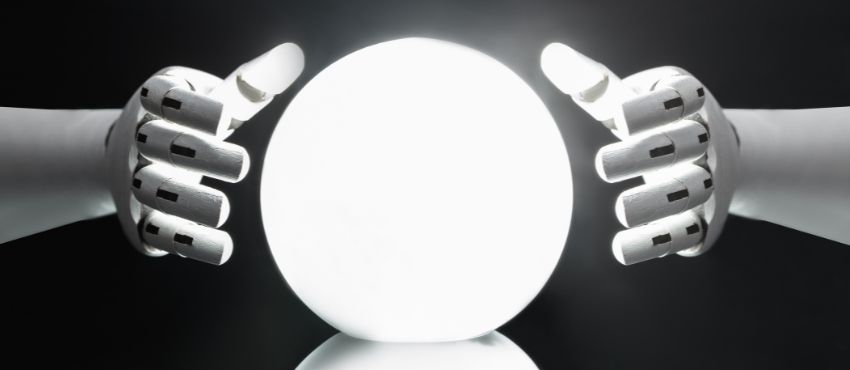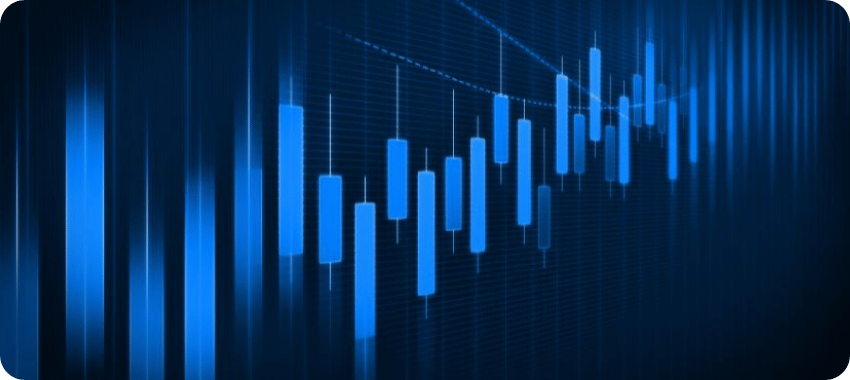27 HVACR Industry Statistics: Key Industry & Market Trends (2025)
The significance of HVACR industry statistics extends beyond mere comfort, playing a pivotal role in the economy by driving innovation, creating jobs, and fostering sustainable practices. In modern life, the Heating, Ventilation, Air Conditioning, and Refrigeration (HVACR) industry emerges as an indispensable thread, weaving comfort, safety, and efficiency into our daily existence.
This industry doesn’t just regulate temperatures; it ensures the preservation of food, the efficacy of medical facilities, and the productivity of businesses.
- 27 HVACR Industry Statistics: Key Industry & Market Trends (2025)
- HVACR Industry Statistics
- Global Market Overview
- Trends and Technological Advancements
- Energy Efficiency and Environmental Impact
- Usage and Consumer Behavior
- Employment and Salary Statistics
- Market Leaders and Competitive Landscape
- Challenges and Future Predictions
- Conclusion
- FAQs

The North American HVAC System Market
The North American HVAC system market is expected to grow from $46.74 billion in 2023 to $67.47 billion by 2030.(16)
HVACR Industry Statistics
The HVACR industry is on a robust growth trajectory, marked by significant statistics:
- The US HVAC systems market size was valued at $17.15 billion in 2022 and is projected to grow at a compound annual growth rate (CAGR) of 5.6% from 2023 to 2030. (1)
- Annually, the U.S. witnesses over 3 million HVAC system replacements, highlighting the sector’s massive service market. (1)
- Expenditures on HVAC services and repairs soar, with an annual spending of approximately $14 billion, indicating the industry’s substantial economic footprint. (1)
In this post, we aim to unfold the layers of the HVACR industry, presenting a detailed analysis of its statistics, discerning the trends that shape its trajectory, and forecasting the future that awaits this vital sector.

Global Market Overview
The HVACR industry stands as a colossal entity within the global market, boasting a size that commands attention. Recent evaluations place the market size at approximately $240.8 billion, a testament to its expansive reach and integral role in various sectors.
This figure isn’t just a number; it represents the industry’s vast network of professionals, the technological advancements propelling it forward, and the multitude of businesses and homes that depend on its services.
- The global HVAC market is projected to reach about 367.5 billion US dollars by 2030. (1)
- The top 30 HVACR distribution companies totaled nearly $13 billion in sales last year, with the top companies including Ferguson Enterprises LLC, Winsupply Inc., R.E. Michel Co., Russell Sigler Inc., and The Habegger Corp. (2)
- The US HVAC services market is predicted to increase in value from $25.6 billion in 2019 to $35.8 billion in 2030, with a compound annual growth rate (CAGR) of 9.7% from 2019 to 2025. (3)
Projected Growth and Future Predictions
Looking ahead, the HVACR industry is not just resting on its laurels. As stated above, projections indicate a trajectory of robust growth, with the market size expected to burgeon to an impressive $367.5 billion by 2030. This growth is not merely quantitative; it encapsulates the industry’s evolution in adopting greener technologies, its strides in energy efficiency, and its commitment to meeting the changing needs of a dynamic world.
The projected expansion is a narrative of innovation, sustainability, and an unwavering commitment to enhancing life’s quality. In the subsequent sections, we will delve deeper into the statistics that chart this industry’s course, dissect the trends that are molding its future, and provide a compass to navigate the promising horizon that lies ahead for the HVACR sector.

Trends and Technological Advancements
In an era where technology evolves at a breakneck pace, the HVACR industry is not just keeping up; it’s leading the charge. A significant trend reshaping the landscape is the integration of smart technology and the Internet of Things (IoT) into HVAC systems. This fusion has birthed a new generation of HVAC solutions that are not only reactive but also proactive.
Smart HVAC systems, equipped with advanced sensors and AI-driven analytics, can predict maintenance needs, optimize energy consumption, and provide unparalleled comfort and control to the users. The IoT’s role in this transformation is pivotal, enabling devices to communicate seamlessly, thereby creating a cohesive and intelligent environment that responds intuitively to human presence and climatic conditions.
- The Environmental Protection Agency (EPA) has issued a directive to reduce the production and importation of Hydrofluorocarbons (HFCs) by 85 percent within the coming 15 years. (4)
- As of the latest industry insights, approximately 35% of HVAC manufacturer representatives have integrated specialized software solutions like ROM into their operations, aiming to foster growth, enhance accuracy, and boost efficiency in their business processes. (5)
- The industry is at a crossroads due to the convergence of stringent government regulations and a focus on sustainability. This has led to a growing emphasis on energy-efficient solutions and green technologies (6)
Pioneering Technological Advancements: Geothermal, DeVAP, and Solar HVAC Systems
Innovation in the HVACR industry is not confined to digital technology. Groundbreaking advancements in system design and energy sourcing are setting new benchmarks for efficiency and sustainability. Geothermal HVAC systems, for instance, leverage the earth’s stable underground temperature to provide heating and cooling solutions that are both eco-friendly and cost-effective.
On the other hand, desiccant-enhanced evaporative (DeVAP) HVAC systems present a novel approach to air conditioning, utilizing water and desiccants to cool and dehumidify the air, significantly reducing energy consumption.
Solar HVAC systems are yet another testament to the industry’s commitment to sustainability. By harnessing the sun’s energy, these systems offer a clean, renewable, and abundant source of power for heating and cooling needs. The integration of these technologies marks a leap towards a future where HVAC systems are not just functional but are also stewards of environmental conservation.

Energy Efficiency and Environmental Impact
As the global dialogue on energy conservation gains momentum, the HVACR industry finds itself at the forefront of this conversation. The push for energy efficiency is driven not just by a collective environmental conscience but also by the tangible impact of rising energy costs and stringent government regulations.
The industry’s response has been proactive and innovative, with a marked shift towards systems that offer maximum output with minimal energy input. Energy-efficient HVAC systems are no longer a luxury but a fundamental requirement, driven by consumer demand and regulatory frameworks that champion sustainable practices.
- Upgrading to more efficient heating and cooling systems can result in substantial energy conservation. Depending on the geographical area, such enhancements could slash energy consumption for electric heating and cooling systems by as much as 50%. (7)
- HVACR systems account for as much as 60% of a building’s energy usage, underscoring the importance of energy efficiency measures in this domain to curtail energy expenses and diminish the carbon footprint. (8)
- Advanced HVAC technologies, coupled with data analytics, are increasingly pivotal in enhancing the sustainability and operational efficiency of heating, ventilation, and air conditioning systems. (9)
Navigating Towards Sustainable Building Design
The environmental impact of HVAC systems extends beyond energy consumption. It encompasses the entire lifecycle of the systems, from manufacturing and operation to disposal. Recognizing this, the industry is pivoting towards sustainable building design, an approach that integrates the principles of environmental sustainability into every facet of the HVAC system.
This paradigm shift is evident in the adoption of eco-friendly materials, the design of systems that minimize waste and pollution, and the implementation of recycling and responsible disposal practices. Sustainable building design is not just an industry trend; it’s a comprehensive strategy to ensure that the comfort and convenience provided by HVAC systems do not come at the expense of the planet.
Usage and Consumer Behavior
The ubiquity of HVAC systems in residential and commercial settings is a testament to their integral role in modern living. Statistics paint a vivid picture of this prevalence: a staggering 90% of homes in the US are equipped with air conditioning. (10) This high penetration rate is not just a reflection of the need for comfort but also an indicator of the HVACR industry’s ability to meet diverse consumer demands across various climatic zones.
- Focus on Energy-Efficient Solutions: Research by ENERGY STAR reveals that energy-efficient HVAC systems are a critical consideration for 40% of homebuyers, showcasing a robust inclination towards energy-saving options in residential spaces. (11)
- Impact on Energy Expenditure: HVAC systems, particularly air conditioning units, are responsible for 6% of the total electricity consumption in the United States, translating to an annual expense of around $29 billion for homeowners. This underscores the substantial energy demand and the financial implications of HVACR systems. (12)
Shifting Consumer Preferences Towards Sustainability
In recent years, consumer behavior has undergone a significant shift, with a growing emphasis on sustainability and energy efficiency. This change is not merely a trend but a profound transformation in consumer consciousness. Individuals and businesses alike are now more discerning in their choices, opting for HVAC systems that promise not just comfort but also energy conservation and a minimal environmental footprint.
The preference for energy-efficient and eco-friendly products is reshaping the market, compelling manufacturers to innovate and offer solutions that align with the ethos of responsible consumption.

Employment and Salary Statistics
The HVACR industry is not just a network of systems and technologies; it’s a vibrant ecosystem of skilled professionals. Employment statistics underscore the sector’s significance as a major job creator. The number of HVAC technicians and specialists is on the rise, reflecting the industry’s robust growth and the escalating demand for skilled labor.
Job growth rates in this sector consistently outpace the national average, painting a picture of an industry that is not just thriving but also offering stable and rewarding career paths.
- Sector Distribution of HVAC-R Technicians: HVAC-R technicians predominantly operate within the construction, manufacturing, and technology sectors. The representation across industries is as follows: construction leads with 14%, followed by manufacturing at 11%, technology at 9%, professional services at 8%, hospitality, health care, and education each at 7%, retail at 6%, government at 4%, with other sectors making up the remainder. (13)
- Company Size and Technician Allocation: The presence of HVAC-R technicians varies with company size. Companies with 50 – 100 employees host 23% of technicians, those with 100 – 500 employees have 27%, firms with 500 – 1,000 employees employ 7%, larger organizations with 1,000 – 10,000 employees have 18%, and the largest companies with over 10,000 employees account for 21%. (13)
- Preferences in Company Type: HVAC-R technicians show a preference for employment types, predominantly favoring private companies. The distribution is as follows: 7% in education, 19% in public companies, a significant 69% in private companies, and 5% in government roles. (13)
Salary Trends and High-Demand Areas
The financial prospects in the HVACR industry are as promising as its employment statistics. Salary ranges for HVAC professionals vary widely, influenced by factors such as expertise, experience, and geographical location. On average, HVAC technicians in the US earn a competitive annual salary, with entry-level positions offering a solid foundation and experienced professionals commanding substantial remuneration.
High-demand areas, often characterized by extreme climatic conditions or booming construction sectors, offer lucrative opportunities for HVAC professionals. These regions not only provide attractive salaries but also a dynamic work environment that is at the forefront of technological and environmental innovation.
- In the United States, the workforce boasts more than 169,363 professionals specializing in HVAC-R, predominantly engaged in sectors such as construction, manufacturing, and technology. On average, HVAC technicians earn an annual income of approximately $50,000. (13)
- California has the highest HVAC employment with about 69,400 jobs, followed by New York with 68,100 jobs, and Texas with 67,300 jobs. (12)
- In the United States, manufacturer sales representatives earn an average yearly income of $64,382, with the salary spectrum generally spanning from $42,000 to $97,000. (13)
- the Bureau of Labor Statistics (BLS) indicates that the median yearly salary for sales representatives in wholesale and manufacturing, excluding technical and scientific products, stood at $63,230 as of May 2022. (14)

Market Leaders and Competitive Landscape
The HVACR industry is characterized by the presence of major players whose innovations and market strategies significantly influence the sector’s dynamics. Companies like Daikin, Carrier Corporation, and Trane Technologies are not just names; they are titans that command substantial market shares.
These industry leaders are synonymous with quality, reliability, and technological prowess, setting benchmarks that shape consumer expectations and industry standards. Take a look at these HVACR industry statistics around market leaders and their marketing efforts.
- A significant portion of their income, ranging from 7% to 10%, is allocated by the majority of HVAC business proprietors towards marketing efforts in the HVAC sector. (12)
- Over half of HVAC contractors, about 55%, leverage Google ads as a strategy to attract new clients and elevate their brand presence. Notably, the HVAC services sector experiences an average Click-Through-Rate of 33% for these ads. (12)
- In terms of HVAC marketing, the typical expense per lead stands at $62, although this figure can vary, spanning from $50 to as much as $150 per lead, contingent on regional factors and the level of competition among local air conditioning service providers. (12)
Navigating the Competitive Landscape
In a market as dynamic as the HVACR industry, staying ahead is not just about meeting standards but setting them. Companies are constantly innovating, pushing the boundaries of what’s possible in HVAC technology. But innovation is not confined to product development alone; it permeates every aspect of the business, from customer service to after-sales support.
In this competitive landscape, companies are not just selling products; they are offering comprehensive solutions that address the nuanced needs of a diverse clientele. This holistic approach, combining cutting-edge technology with exceptional service, is what distinguishes the leaders in this fiercely competitive sector.

Challenges and Future Predictions
The HVACR industry, despite its robust growth, is not immune to challenges. Skilled labor shortages present a significant hurdle, underscoring the need for comprehensive training and education programs. Supply chain issues, exacerbated by global events, have also highlighted the importance of resilience and adaptability in operations.
These challenges are not just obstacles but opportunities for the industry to innovate, evolve, and fortify its foundations.
- The industry is grappling with a shortage of skilled personnel, highlighting the necessity to showcase the dynamic and rewarding career paths within the sector to a broad spectrum of potential candidates. (15)
Anticipating the Horizon: Expert Predictions
Looking toward the future, experts predict a trajectory of sustained growth for the HVACR industry. This growth, however, is not just quantitative; it’s qualitative. The industry is expected to evolve, embracing more sustainable practices, integrating advanced technologies, and offering solutions that are not just efficient but also environmentally responsible.
Companies that can adapt to these changes, that can balance the trifecta of innovation, sustainability, and customer-centricity, are the ones poised to thrive in this evolving landscape.
Conclusion
Now that we have taken a closer look at HVACR industry statistics, with its intricate blend of technology, service, and sustainability, we see it stands at a pivotal juncture. From the global market overview to the nuanced consumer behavior, from the competitive landscape to the future predictions, this article has traversed the multifaceted realm of the HVACR industry. Staying informed about these trends and insights is not just beneficial for businesses and professionals within the industry; it’s crucial. It’s the compass that will navigate stakeholders through the challenges and opportunities that lie ahead, ensuring that the comfort and efficiency we enjoy today do not compromise the well-being of future generations.
FAQs
The HVAC systems industry boasts a global market size of approximately $240.8 billion. In the US alone, 90% of homes are equipped with air conditioning, reflecting the industry’s extensive reach. Technological advancements and consumer demand for energy-efficient and eco-friendly products continue to shape the market dynamics.
In 2024, the HVAC industry is expected to continue its trajectory of robust growth. With a projected global market size reaching $367.5 billion by 2030, the industry is adapting to technological innovations and a shift towards sustainable practices, driven by consumer demand and regulatory frameworks.
The industrial HVAC market is a substantial segment of the overall HVAC industry. While specific figures vary, the industry’s expansive reach and the increasing demand for energy-efficient and sustainable HVAC solutions in industrial settings contribute to its significant market size. The global HVAC systems market, encompassing residential, commercial, and industrial sectors, is expected to reach $370 billion by 2030, highlighting the industry’s substantial economic impact.
Source
- https://cielowigle.com/blog/hvac-industry-trends/
- https://www.cdjones.com/advancedwebpage.aspx?cmspage=news%2Ftop-30-distributors-2023%2F
- https://www.acca.org/hvac-industry-growth
- https://www.hvacrbusiness.com/news/2022/nov/01/top-5-hvacr-tech-energy-software-trends-in-2023/
- https://www.achrnews.com/articles/153871-hvac-technology-trends-to-watch-in-2024
- https://www.linkedin.com/pulse/hvacr-technologies-transition-keeping-up-changes-hvac-excellence-luinc?trk=public_post_main-feed-card_feed-article-content
- https://rpsc.energy.gov/tech-solutions/hvac
- https://www.waylay.io/articles/how-to-achieve-energy-efficiency-with-iot-enabled-solutions-for-hvacr-in-building-management
- https://www.motili.com/blog/hvac-innovations/
- https://zipdo.co/statistics/hvac/
- https://energy5.com/exploring-consumer-behavior-in-reaction-to-hvac-energy-rebates
- https://sbeodyssey.com/blog/hvac-industry
- https://www.zippia.com/hvac-r-technician-jobs/demographics/
- https://www.bls.gov/oes/current/oes414011.htm
- https://www.womeninhvacr.org/webapp/GetFile?fid=%7BDF04B2EE-8E81-42B5-A00D-6E0817168BFF%7D
- https://www.fortunebusinessinsights.com/north-america-hvac-system-market-106243

